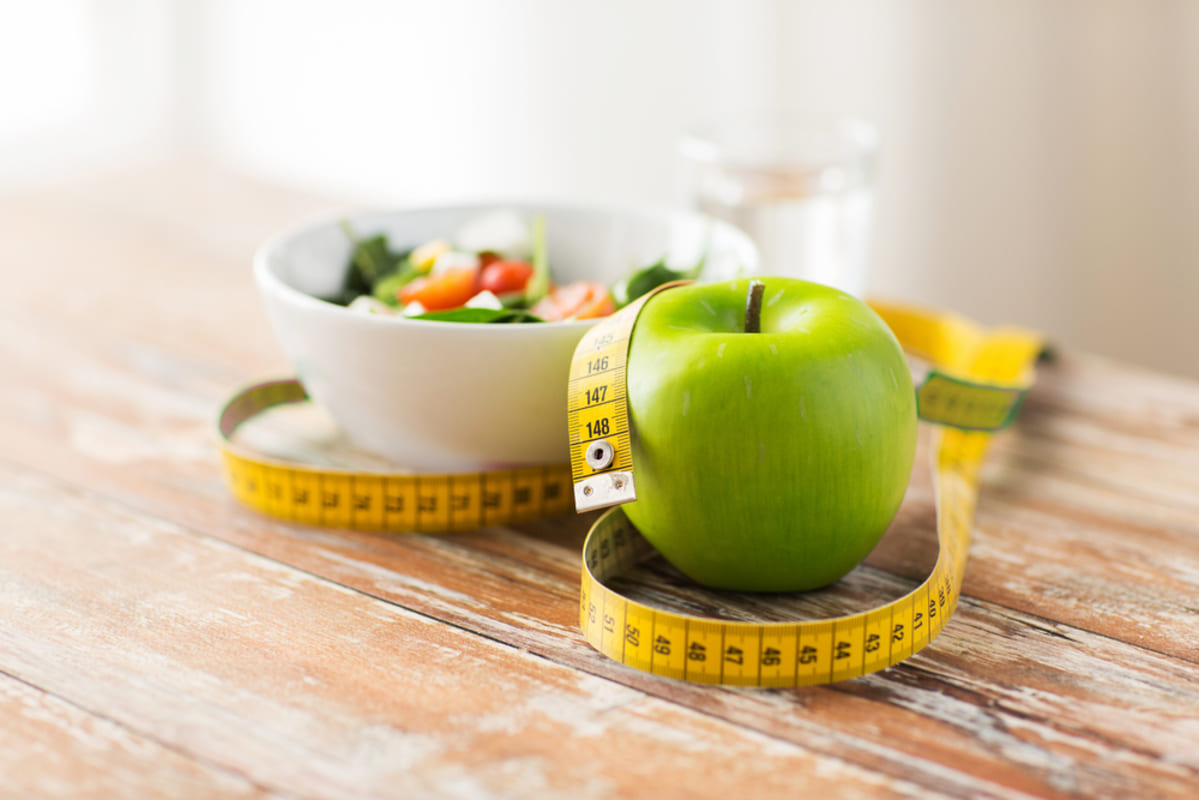The term “calories” is used to describe the amount of energy that can be stored and expended by the cells of the body. The sources of calories are foodstuffs.
What are calories?
A calorie is a unit of energy. Calories are used to calculate the energy value (caloric value) of foods and the amount of energy used by the body during life activity.
How do calories differ from kilocalories?
One calorie is denoted by “cal” and corresponds to the amount of energy needed to raise the temperature of one gram of water by one degree Celsius. 1000 calories is a kilocalorie, denoted by “kcal”. The number of “calories” consumed by the body or contained in food should be interpreted as the number of “kilocalories” in most cases.
Why does the body need calories?
The body uses energy from calories to function properly. Energy is released by breaking down the foods consumed during the digestive process. Calories are needed by every cell in the body.
How many calories does a person need daily?
The number of calories consumed is proportional to the level of physical activity. It is possible to lead a sedentary lifestyle, maintain moderate or high activity.
| Daily calorie intake by age | ||||
| Sex | Age | Sedentary (sedentary) lifestyle (kcal) | Moderate activity (kcal) | High activity (kcal) |
| Women | 0-3 | 1000 | 1000-1400 | 1000-1400 |
| 4-8 | 1200-1400 | 1400-1600 | 1400-1800 | |
| 9-13 | 1400-1600 | 1600-2000 | 1800-2200 | |
| 14-18 | 1800 | 2000 | 2400 | |
| 19-30 | 1800-2000 | 2000-2200 | 2400 | |
| 31-50 | 1800 | 2000 | 2200 | |
| От 51 | 1600 | 1800 | 2200 | |
| Men | 0-3 | 1000 | 1000-1400 | 1000-1400 |
| 4-8 | 1200-1400 | 1400-1600 | 1600-2000 | |
| 9-13 | 1600-2000 | 1800-2200 | 2000-2600 | |
| 14-18 | 2000-2400 | 2400-2800 | 2800-3200 | |
| 19-30 | 2400-2600 | 2600-2800 | 3000 | |
| 31-50 | 2200-2400 | 2400-2600 | 2800-3000 | |
| От 51 | 2000-2200 | 2200-2400 | 2400-2800 | |
A sedentary lifestyle means low physical activity related to daily activities. Moderate activity includes physical activity approximately equivalent to walking 2.5-5 kilometers at a speed of five to six kilometers per hour, supplemented by physical activity of a sedentary lifestyle. Vigorous activity is equivalent to walking more than five kilometers at a speed of five to six kilometers per hour (in addition to a sedentary lifestyle).
To calculate the calorie norm, you should take into account not only age, gender and physical activity, but also weight, height, metabolic rate, the presence or absence of concomitant diseases (for example, hormonal imbalances). Various formulas can be used to calculate daily calorie expenditure. For example, with moderate physical activity, you can multiply your weight (in kilograms) by 33. When using any calorie calculator, it is difficult to take into account all the factors that affect the result, so an error in calculations is inevitable.
How does the caloric content of food affect body weight?
The energy value of food, which can be calculated using the table of calories in foods and dishes, has a direct impact on body weight. If the food consumed contains more calories than the body uses, the body weight increases. Most of the unspent energy from calorie-dense foods is stored as adipose tissue. When there is a caloric deficit, body weight decreases as the body uses up the stored energy reserves. When the caloric content of the diet matches the body’s energy expenditure, weight remains unchanged.
Body mass index (BMI) is used to assess the relationship between weight and height. To calculate BMI, it is necessary to divide weight (in kilograms) by the square of height (in meters). Ranges of BMI values:
- less than 18.5 – underweight;
- 18.5-24.9 – normal weight;
- 25-29.9 – overweight;
- over 29.9 – obese.
Example of calculating BMI for a weight of 80 kg and a height of 1.8 meters: 80: (1.8 x 1.8) = 24.69 (normal weight). If your BMI is outside the normal range, it is recommended that you consult a nutritionist for a weight management program.
How do I calculate calories for weight maintenance?
A universal way to calculate the number of calories burned by the body at rest is the Mifflin-SanGeor formula. Methodology for calculating the daily calorie allowance:
- for women: (weight (kg) x 10) + (height (cm) x 6.25) – (age (years) x 5) – 161;
- for men: (weight (kg) x 10) + (height (cm) x 6.25) – (age (years) x 5) + 5;
- to calculate your calorie allowance, multiply the obtained value by the activity coefficient (sedentary lifestyle – 1.2, light activity – 1.375, moderate activity – 1.55, high activity – 1.725, very high activity – 1.9).
For example, the number of calories consumed per day for a woman with a weight of 70 kg, height of 170 cm, age 50 years and moderate activity is: (70 x 10) + (170 x 6.25) – (50 x 5) – 161 = 1351.5 kcal. Calculating the number of calories burned per day for a man with similar parameters: (70 x 10) + (170 x 6.25) – (50 x 5) + 5 = 1517.5 kcal.
How to calculate calories for weight loss?
Before calculating calories for weight loss, it is necessary to consult a nutritionist or family doctor, undergo examinations and exclude diseases that can affect body weight. A safe way to lose weight involves following a healthy, balanced diet with a reduction in the number of calories consumed per day while increasing physical activity.
To avoid the side effects of drastic weight loss, which is stressful for the body, it is recommended to maintain a daily energy deficit (the difference between the energy consumed and the number of calories in the foods consumed) between 500-700 kcal. As a result, weight will be reduced by 0.5-0.7 kg per week. To calculate the calorie deficit, you can use the table of energy value of products.
How to calculate calories for weight gain?
Calorie calculation for weight gain is similar to the principle used for weight loss: to gain 500-700 grams per week, it is enough to ensure an energy surplus of 500-700 calories per day. To make a balanced diet that provides the body with enough calories for weight gain and essential nutrients, it is necessary to make an appointment for a consultation with a therapist or nutritionist.
Why consider the quality of calories consumed?
When preparing a menu, you should not only count calories, but also pay attention to the composition of each product. For example, if the diet is dominated by fatty and sweet foods, lack of protein, fruits and vegetables, as well as alcohol abuse (both low-calorie and high-calorie), an imbalance of nutrients is created in the body.
Consumption of “empty calories” can result in increased blood sugar levels, intense insulin production, increased hunger and fat accumulation. In addition, vitamin, mineral and protein deficiencies can lead to disorders in the organs and systems of the body, regardless of the number of calories consumed.
What foods are considered low-calorie?
Low-calorie products are those whose energy value does not exceed 40 kcal per serving. For example, some of the lowest calorie foods are vegetables.
A serving size is the amount of food that is typically consumed in one meal. Here is a table of serving sizes for some foods
| Portion size chart for some foods | |
| Product | Serving size |
| Boiled rice | Two to three tablespoons |
| Yogurt | 130 g |
| Boiled chicken | 90 g |
| Bucked Bens | 150 g |
| Grapes, apricots, plums, raspberries, strawberries, tomatoes, cucumbers, sweet peppers | 80 g |
| Dried fruits | 30 g |
One apple, banana or orange can also be considered a serving. For drinks, the serving volume can be 150-250 ml.
What foods are high-calorie?
High-calorie foods are those with an energy value of more than 200 kcal per serving. Examples of servings of high-calorie foods:
- nuts – 40 g;
- two pieces of toast with cheese or peanut butter;
- chocolate bar – 50 g;
- fatty yogurt – 150 g;
- milkshake – 400 ml;
- two medium mackerel fillets (140 g).
The caloric content of a product or drink is largely influenced by the sugar and fat content. The energy value of 100 g of sugar exceeds 350 kcal, and 100 g of fat can contain up to 900 kcal.
How many calories are consumed during exercise?
Calorie expenditure during a continuous one-hour training session can be used as a guide when designing exercise programs. Energy expenditure is calculated for a body weight of 70-75 kg.
| Energy expenditure during exercise | |
| Type of activity | Energy expenditure (calories per hour) |
| Fitness | 365 |
| Water aerobics | 400 |
| Cycling | 300 |
| Ballroom dancing | 220 |
| Moderate-intensity elliptical exercise | 360 |
| Playing golf | 320 |
| Hiking | 440 |
| Running at a speed of eight kilometers per hour | 600 |
| Skiing | 310 |
| Swimming (light to moderate) | 420 |
It is recommended to exercise for at least half an hour a day to increase the effect of training. You can alternate between aerobic activity (exercises that increase your heart rate) and strength training accompanied by intense muscle exertion. Examples of exercises for weight loss at home that complement gym classes are squats, push-ups, body lifts (abs), lunges and jumping jacks.
How many calories are burned by walking?
For 30 minutes of brisk walking you can burn about 150 kcal. Fast is considered walking at a speed of at least five to six kilometers per hour. Energy consumption increases when moving uphill and over rough terrain, decreasing on descents and flat areas.
How many calories are burned during sex?
An average of three to four calories per minute are burned during sex. Men’s energy expenditure tends to be higher than women’s.



